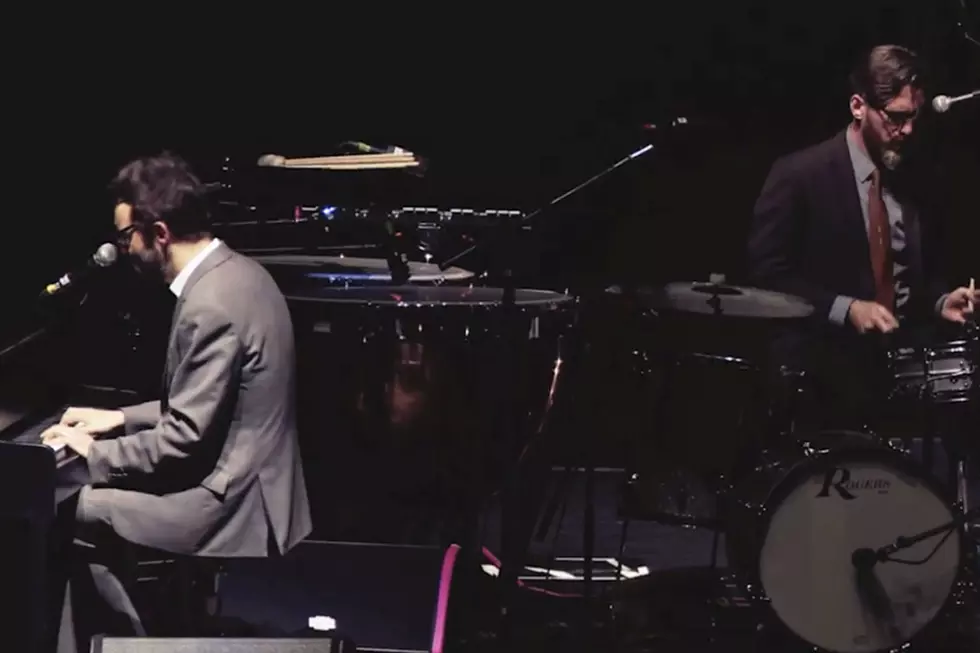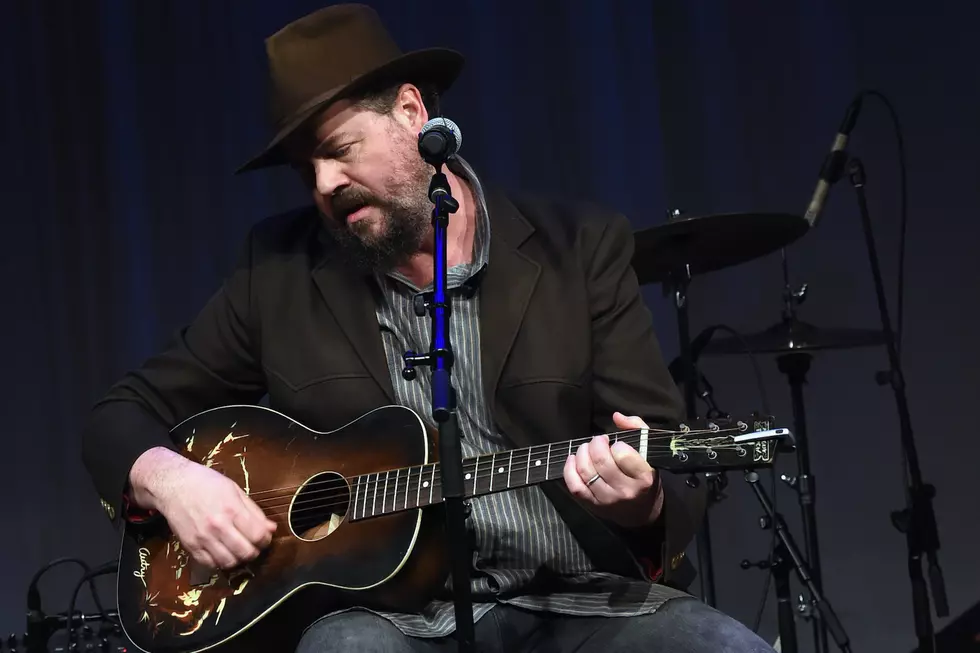
E on the History of the Eels: ‘I Always Did Intend to Change and Evolve From Project to Project’
I was in my late-twenties when I gained the courage to get my life together.
This epiphany would come at the hands of one of my favorite bands, the Eels, whom I had just seen moments before at the Bottleneck, a dive bar in Lawrence, Kansas. The band’s moody and charismatic lead singer was in his pajamas and perched in the doorway of their tour bus greeting fans. Shy and apprehensive of potential backlash, I made no effort to say hello, opting instead to coerce and cajole someone else into getting the setlist that I had stolen from the stage signed.
The setlist was returned to me with the following message: "Josh -- Don’t be a pussy. E."
I had never thought of it that way.
Nearly 10 years later, as I spoke with E on the phone, I told him the story of how he jolted me awake with his blunt and direct style of life coaching. His casual reply would not only summarize his career, but my life as well: "Well, I’m glad that my particular brand of tough love humor resonated with someone."
It was that same tough, no nonsense approach to life that propelled the Eels to a 20-year career that has produced 11 studio albums. "After the first Eels album, Beautiful Freak," E says of the Eels’ 1996 debut disc, featuring the chart-busting "Novocaine For the Soul," "we started working on the Electro-Shock Blues album. I was surrounded by people who thought that I should make Beautiful Freak Part II or something. So, I ended up firing my management because I believed in Electro-Shock Blues."
The two albums couldn’t have been more different. While both resonated a hopelessness and torment reflective of E’s life, the poppy and commercial vibe of Beautiful Freak made way for the honesty and vulnerability of storytelling as E worked through his emotions surrounding the suicide of his sister and his mother’s diagnosis of cancer. Electro-Shock Blues became his diary about death. "My songs are really just me singing to myself," he confesses. "I’m trying to convince myself of something. I was never very interested in painting just one side of life. I just wanted to reflect all the different sides of life.
'I was never very interested in painting just one side of life. I just wanted to reflect all the different sides of life.'
"When I look back, I think that's maybe the reason why I’m still around. If I had done what they wanted me to and just made another Beautiful Freak, that would have been the end of it. That type of thing isn’t really made to last. With music, you don’t just throw things at the wall to see what sticks. I always did intend to change and evolve from project to project."
No statement more thoroughly encompasses the Eels. In 2000, fans would find the more hopeful Daisy of the Galaxy falling into their laps. Their next two albums -- Souljacker and Shootenanny! -- would approach a darker and harder alt-rock approach to songwriting. Following a shift to Vagrant Records in 2005, the band released the 33-track Blinking Lights and Other Revelations, which E himself calls an album about "God and all of the questions related to the subject of God." The Eels trilogy of Hombre Lobo, End Times and Tomorrow Morning followed, beginning in 2009, exploring themes of things wanted, things lost and challenges accomplished. Then the Eels cranked out two more records in a little over a year, with Wonderful, Glorious launching in February 2013 and The Cautionary Tale of Mark Oliver Everett arriving in April 2014.
Each album would reinvent both the band and the man at the helm. "Growing up as a kid, I was always dazzled by how much the Beatles would change from record to record. Not just their sound, but they’d look like different people," E explains. "I think that’s where it started. It is an enormous amount of work and energy to reinvent yourself as someone new a couple months, couple days ... sometimes a couple hours after you’ve finished years of being someone else. But it is also a way to keep it interesting. It makes it all go by fast. The time flies by because you’re so entrenched in whatever it is that you’re doing. It is something different than before, so you’re in the moment a lot."
E’s philosophies on adapting aren’t limited to his studio approach. Eels’ live show is endlessly evolving and growing as well. "When I walked into a show, I wanted to be surprised in some way," he says. "Even if the artist came out and sang one song, then threw a tantrum and left ... I’d feel like I got my money’s worth. We try to make it so the whole evening is part of the experience from the moment you walk in. We pick the music we play before we hit the stage; sometimes we come out and play more after everyone thinks we’re done and has gone home and there are only a few stragglers. We just try to make the whole thing an experience if possible.”
On his most recent tour, the notoriously reclusive frontman took to the crowd for a round of hugs. "It is so ... not something I would normally do,” E admits. "I felt no one would expect that from me because I really don’t want to do that. It isn’t something that I would normally just ask to do, so it appealed to me because it was a surprise. It wasn’t easy. It was actually quite terrifying. Most nights it was more touching than not, but you didn’t know what was going to happen, so it was somewhat scary. Some nights I almost ended up in fistfights, which is somewhat ironic when you’re headed out to hug your crowd and thank them for years of support, but there are always bad apples that ruin it for everyone. People take advantage of the vulnerable position I’ve put myself in, but I did it, because that’s the only way to accomplish anything."
It is that same "crawl in the crowd and hug the room" mentality that drives the Eels in their "somewhat" unconventional career.
Inadvertently, they also taught me to not "be a pussy." I’ve never been more thankful for anything.
The Eels' latest release, Live at Royal Albert Hall, hit the streets in April 2015; the recording is taken from their show at the London hall on June 30, 2014. You can pick up the album at this location.
More From Diffuser.fm









